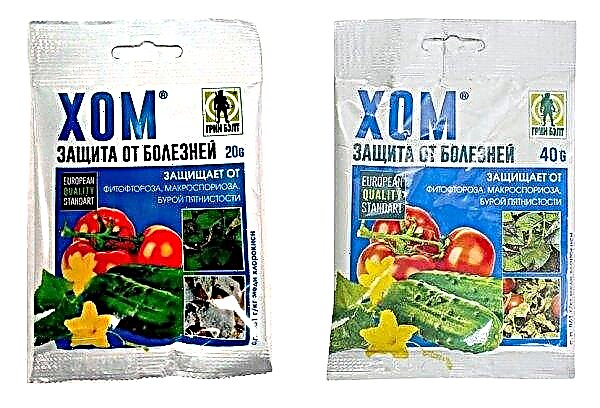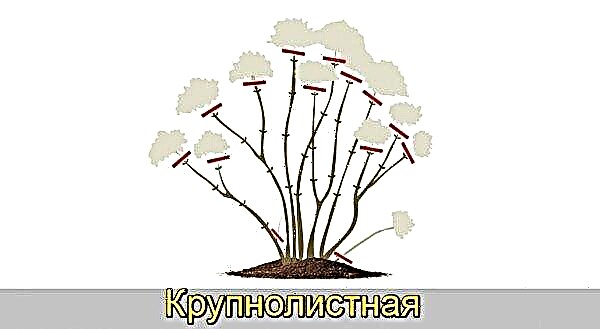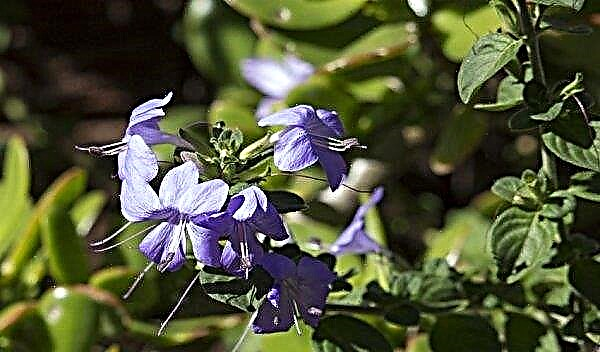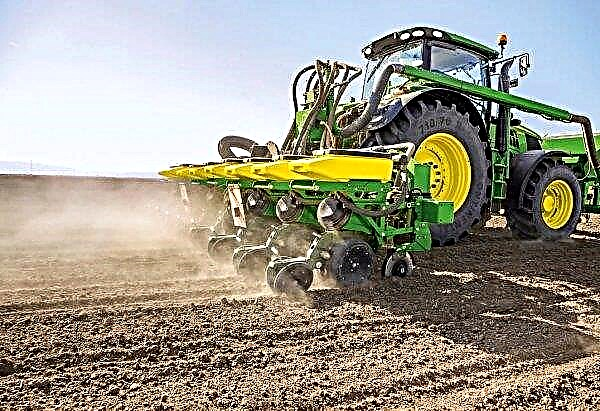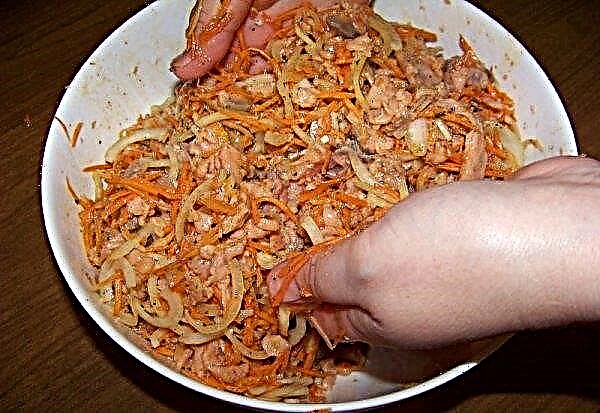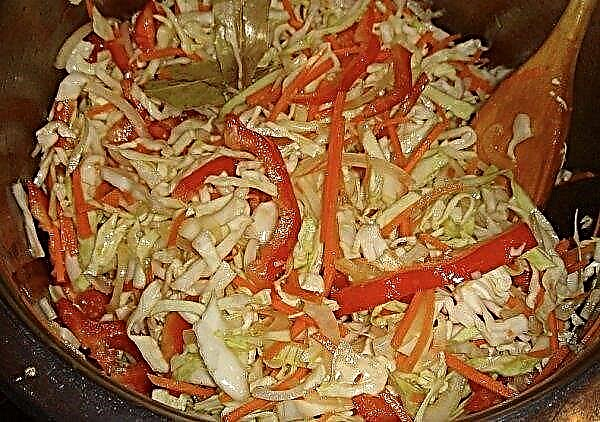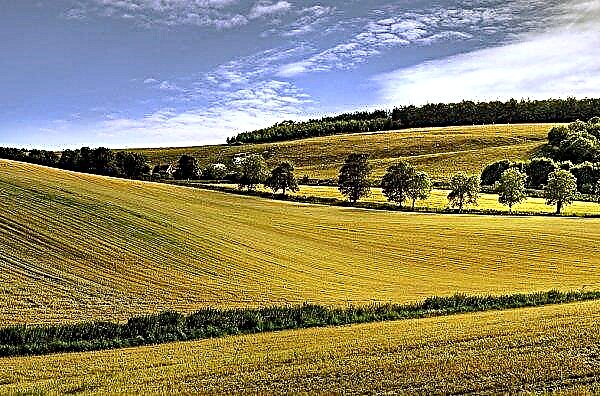Wheat is considered the most common type of cereal that is grown in the world. From it is prepared flour used for the production of bakery products. There are several types of wheat that differ in the growing season - winter and spring. This article will discuss the main differences between them.
The main differences between spring and winter wheat
There are many differences between spring and winter wheat. They differ in the requirement for the composition of the soil, as well as the growing season. In addition, both varieties are characterized by different sowing dates and yield indicators. Thanks to this, you can choose the option that will satisfy all the requirements.
Did you know? Wheat among the ancient Slavs was considered a symbol of wealth, so it was poured into small cloth bags and worn around the neck as a talisman.
Soil and weather requirements
It is recommended that winter wheat be grown on fertile soils, which contain a large amount of phosphorus and nitrogen components. If the plant receives the necessary trace elements, then the root system will develop much better. You can not plant this type of cereal crops on swampy, peat or salt marshes, otherwise the plant will be slow in growth.
 Spring types of cereals are planted in the ground, which has a weak or neutral level of alkali in the composition. When the bushes begin to gain green mass, it is necessary to provide them with a sufficient amount of phosphorus.
Spring types of cereals are planted in the ground, which has a weak or neutral level of alkali in the composition. When the bushes begin to gain green mass, it is necessary to provide them with a sufficient amount of phosphorus.
Vegetation period
Spring and winter wheat have a different vegetation period. This is due to weather conditions in which both varieties will be grown. Cereals planted before winter have a longer growing season. It lasts for 270-360 days. The developmental period of the spring species is about 90–110 days.
Did you know? During excavations of the tombs of Egyptian pharaohs, it was discovered that nobles were buried with necklaces from cereal crops. It was believed that such jewelry protected the ruler from curses in the other world.
Sowing dates
Spring and winter wheat differ in terms of sowing. The first species is recommended to be planted from March to May. When choosing the best time, try to take into account the climatic features of your region. Seeds need to be planted in a short time, since windy and arid weather prevails from April to May. The sun and the abundant wind are able to draw moisture from the soil, which negatively affects the yield.
 In regions where little snow falls in winter, winter crops can be planted if the ambient temperature does not drop below -17 ° C.
In regions where little snow falls in winter, winter crops can be planted if the ambient temperature does not drop below -17 ° C.
The winter variety is recommended to be planted from the end of summer to mid-October. If you sow the seeds too early, the bushes will be too thick. As a result, the culture loses resistance to drought and pests. But you should not delay the landing. Indeed, in this case, the plants do not have time to grow green mass and continue to develop in the spring. As a result, crop performance and stress resistance are reduced.
Productivity
Winter wheat has the highest yield. From one hectare you can collect about 5 thousand kg.
Important! Do not forget to deal with pests and diseases in a timely manner, as these factors can reduce the amount of yield.
Indicators may vary depending on:
- Harvesting technology.
- Duration of sowing.
- The effects of diseases and pests.
- Wrong agricultural practices.
 The yield of spring wheat is about 1,500 kg / ha. If agricultural technologies are strengthened (fertilizing and watering, etc.), then these indicators can be increased several times.
The yield of spring wheat is about 1,500 kg / ha. If agricultural technologies are strengthened (fertilizing and watering, etc.), then these indicators can be increased several times.
Favorable regions for growing
In order to grow healthy and high-quality wheat, it is necessary to take into account favorable regions for each species. Winter cereal crops should be planted in places where abundant snow cover remains in winter. The air temperature should be at least -20 ° C. For this reason, they plant it in the following regions: North Caucasus, Central Black Earth and Volga. The spring type of wheat needs a lot of moisture, sunlight and heat, so most often it is planted in the forest-steppe on the western and eastern sides of the Volga.
Grain Application and Quality
The difference between crops lies in the quality of grain, and, accordingly, in application. Winter soft wheat is used for the production of flour with high nutritional properties and grain calorie content. She goes to the manufacture of bakery products. Hard grain planted before winter is sent for processing. Spring variety is considered a high-value crop. Flour is prepared from it for the production of pasta and cereals. This species has high baking properties.

Is it possible to distinguish spring wheat from winter visually
You can distinguish between spring and winter varieties visually:
- in the form of grain;
- by density - winter wheat grain is harder;
- by the presence of spikes on the ears. Varieties for planting for the winter have awn;
- by the amount of gluten. Winter crops contain more substance.
What do spring and winter wheat have in common
If you think that spring and winter wheat are completely different from each other, then this is an erroneous opinion. Common characteristics include the size of the bush, the height of which is 80–90 cm. Also, both species have the same spike shape (pyramidal) and grain color (yellow). In addition, they have a developed root system that protects plants from drought.

So, spring and winter wheat have a huge number of differences. Thanks to this, you can choose for cultivation that option that is well suited for a particular region in terms of planting and growing season.

